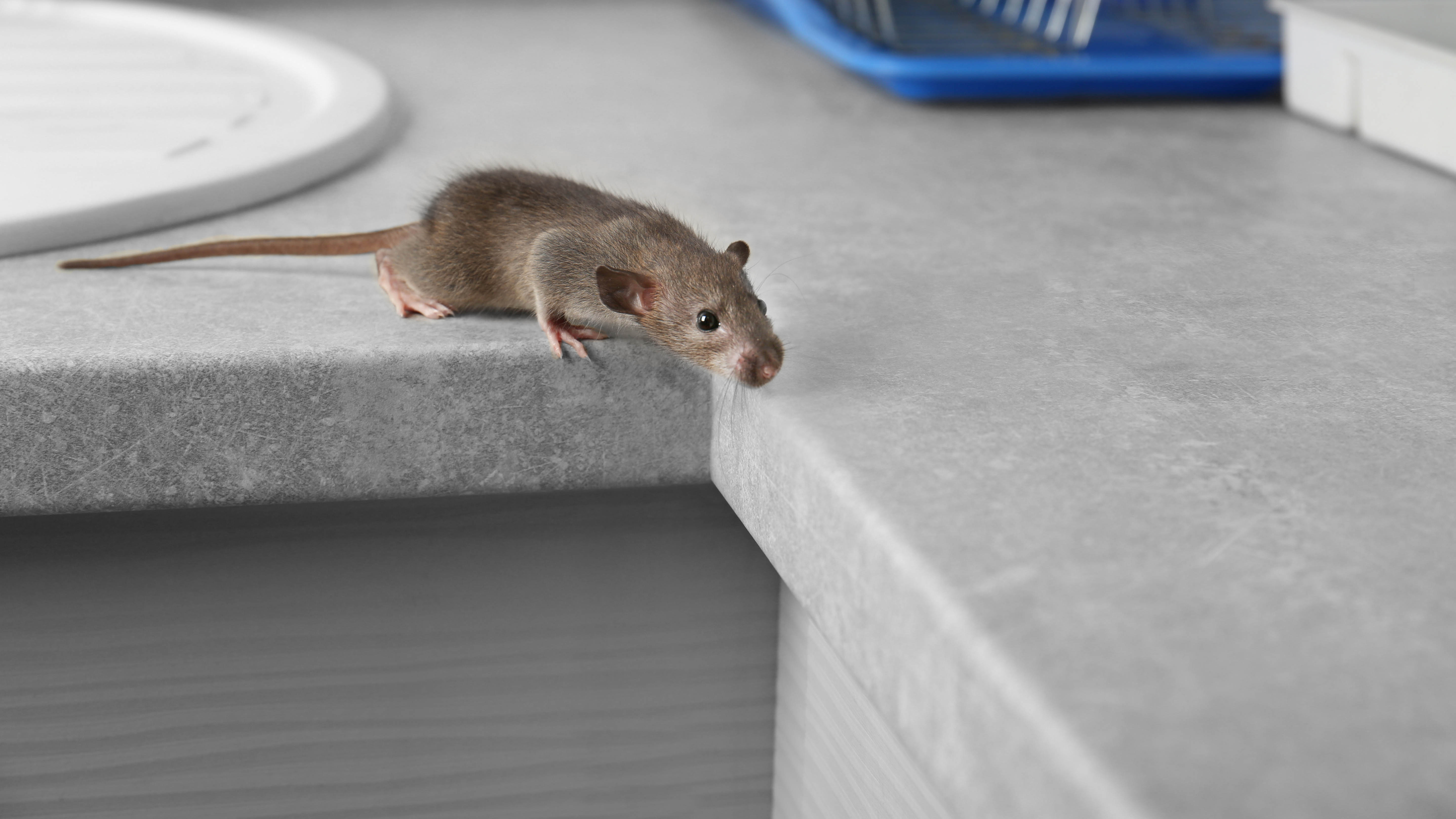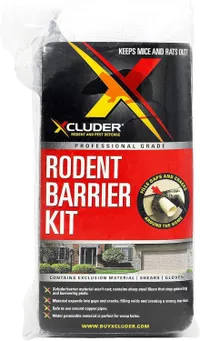Does one mouse mean that you have an infestation? We ask the pest experts

If you spot a mouse scurrying around, it can often be unnerving. But once you’ve got over the initial panic, you’re probably wondering how many more are hiding out in your home!
Nobody likes the idea of having a mouse infestation, and learning how to get rid of mice can be challenging. In addition, mice can be destructive to your home, and are known to both carry diseases and trigger allergies. That's why it’s important to know certain telltale signs that indicate whether there is pest activity.
But, once you’ve eliminated the things that are attracting pests to your home, how do you know if you have a mice infestation? To put your mind at ease (or not), we’ve asked multiple pest experts to give us the truth about whether one mouse means you actually have more — and what to do about it.
Xcluder Rodent Control Fill Fabric: $26 @ Amazon
This is a great preventative barrier to fill gaps, holes and openings throughout buildings. Made from steel wool, this prevents mice, rats and other pests to gnaw through it.
If you spot one mouse, are there more?

Sadly, most of our experts agree that the answer to this question is a probable “yes”. “If you see one mouse, you certainly have more,” states Blair Calder, CEO of Automatic Trap Company. “The number one tell-tale sign you have a mouse infestation, sometimes before you even see the rodent, is droppings. The small dark rice-shaped feces might at first be mistaken for dirt — until you start to find more. Mice are social and live in packs or "co-ops" — forming groups that raise their babies and create a "nest" commune.”
So how many mice are there likely to be? “Mice live in groups, and in 9 out of 10 cases, seeing one mouse in your home means there are more hiding nearby,” adds Nicole Carpenter, the President at Black Pest Prevention. “In very rare cases, one mouse is just one mouse that came to your territory searching for food sources and considering it a new habitat for further reproduction. However, even if it’s just a single rogue mouse, it’s a bad sign. It means that mice see your home as a potential habitat, as it offers everything they need. So, if you see one mouse, it doesn't matter if there are other mice hiding nearby or if it's just a single rogue mouse — you should act fast.”
If you see one mouse, you certainly have more
Blair Calder, CEO of Automatic Trap Company
In addition, mice are known to multiply quickly — which is why action should be taken immediately. “Mice also reproduce at an alarming rate,” says Meg Pearson, Training Manager at Critter Control, “And that rate is multiplied when they live in our homes because it means they can reproduce year-round. The safety from predators and warmth of our homes also means that more of their offspring will survive and thrive.”

There is some (slightly) good news though. According to experts, the number of mice you might have will also depend on the type of species. “Depending on the species of mouse, the range of where they sleep to where they eat will vary,” adds Craig Sansig, pest expert at Viking Pest Control. “House mice, which are gray with cream-colored bellies, rarely travel further than a few feet from the nest if conditions are right. The upper edge of their travel range is approximately 30 feet. So, if you have house mice and have droppings more than 30 feet apart, you are likely dealing with more than one mouse.
Get instant access to breaking news, the hottest reviews, great deals and helpful tips.
"White footed or deer mice (sometimes referred to as field mice) have larger territories which can span an acre or more. They can be identified by their brown coloration with white legs and bellies. They will often nest indoors and forage outdoors for food. In my experience, they are more likely to cache food like seeds and acorns. So, if you find an item in your attic or basement filled with seeds or acorns, you are likely dealing with white footed or deer mice."
Where are the common hiding places for mice?

There are certain things to keep an eye out for when dealing with mice infestations. “One of the most often overlooked (and costly) places for mice or rodents — is in your garage,” states Calder. “Mice love to get into your car engine and car air vents. This can be incredibly destructive and costly — up to thousands of dollars to fix after mice chew up the engine and wiring.
While you may not see droppings around or in your car, one of the biggest clues is when you turn on your car air conditioner or heater. If it's blowing out a slightly off-putting, "gamey" smell that turns your stomach, have a car dealer or check yourself the engine and air vents. Chances are there is a mouse baby nursery inside - some alive and some dead. A self-resetting trap in the garage is a quick way to get rid of this problem.”
Mice prefer to be where you are not. The quieter and more sheltered the location, especially near sources of warmth and food are preferred.
Craig Sansig, pest expert at Viking Pest Control
Sansig adds: “Mice prefer to be where you are not. The quieter and more sheltered the location, especially near sources of warmth and food are preferred. These prime locations will be inhabited by the most dominant of the rodent population.”
Other top preventative tips

Also, be sure to inspect around your home for potential gaps, holes or other entry points for mice to enter. “Start by checking your house for potential entry points, paying special attention to the foundation, external walls, attic, and basement, and seal all gaps and holes using mice-resistant fill fabric,” suggests Carpenter.
“Eliminate food and water sources by storing grains and pet food in airtight containers, using lidded trash bins, fixing plumbing leaks, and removing the sources of stagnant water. Decluttering your home will reduce hiding spots for mice. Seal gaps around pipes and electric wires, and install fine mesh screens on vent openings.”
If all else fails, and you want to determine that you don’t have an infestation, always seek advice from your local professional pest control. “
It's prudent to enlist professional assistance sooner rather than later, even if you believe you're only dealing with a few mice,” agrees Pearson. “These rodents may be small but they can quickly contaminate your food supply and spread disease with their fur, feces, urine and more. On top of that, they love to gnaw on everything, which can damage your home, but pose an even greater danger if they begin chewing on active wires. So have a professional address the issue early on, before the problem gets out of hand.”
More from Tom's Guide
- Here are 7 places mice like to hide and what to look out for
- Avoid these 5 things not to do when repelling pests, according to experts
- 5 common mistakes to avoid when getting rid of mice

As the Homes Content Editor, Cynthia Lawrence covers all things homes, interior decorating, and garden-related. She has a wealth of editorial experience testing the latest, ‘must-have’ home appliances, writing buying guides and the handy ‘how to’ features.
Her work has been published in various titles including, T3, Top Ten Reviews, Ideal Home, Real Homes, Livingetc. and House Beautiful, amongst many.
With a rather unhealthy obsession for all things homes and interiors, she also has an interior design blog for style inspiration and savvy storage solutions (get rid of that clutter!). When she’s not testing cool products, she’ll be searching online for more decor ideas to spruce up her family home or looking for a great bargain!

